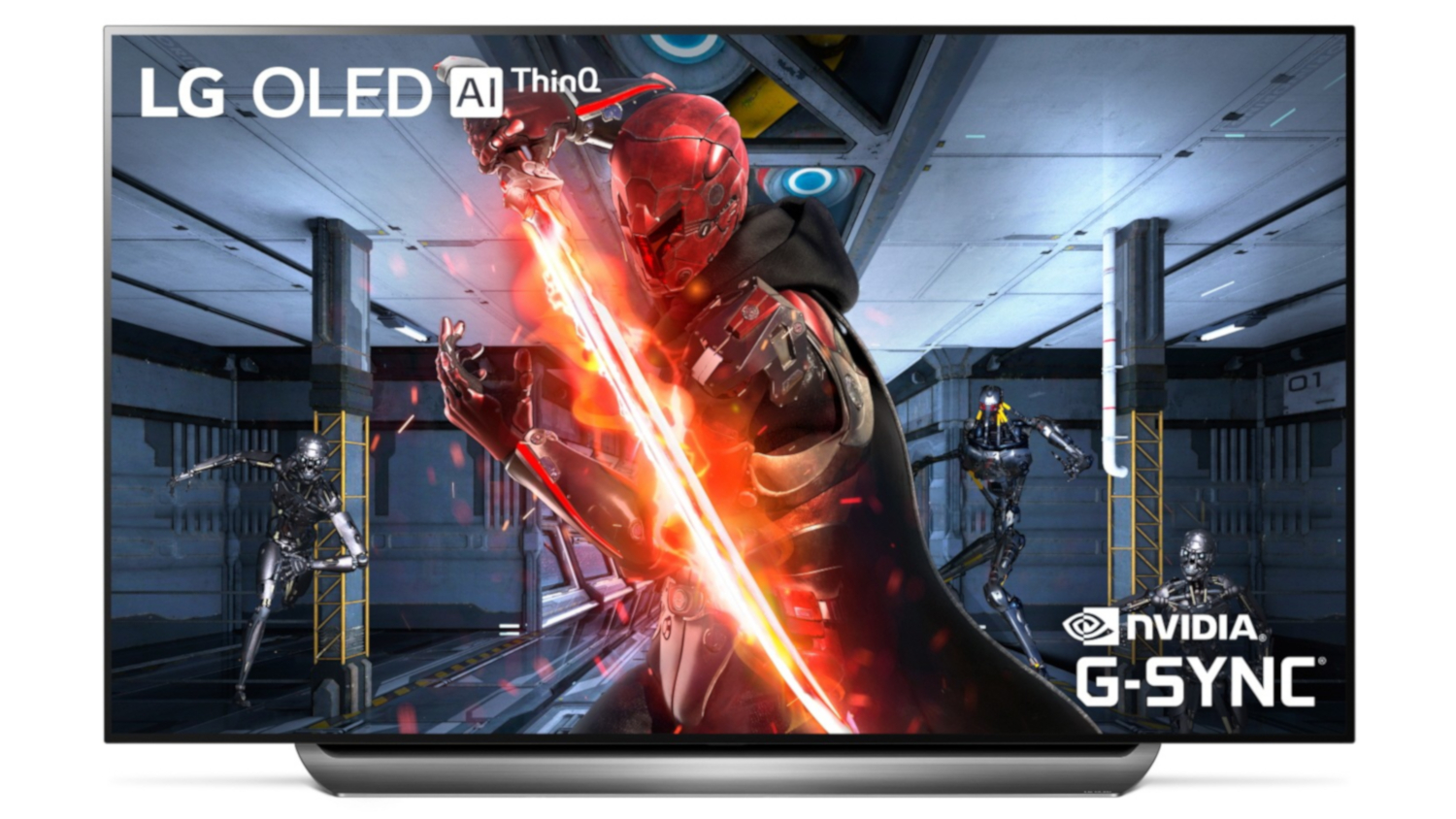LG OLED TVs Rival Big-Screen Gaming Monitors With New G-Sync Compatibility
LG today announced that Nvidia certified several of its OLED TVs as G-Sync Compatible. That means anyone looking for a massive gaming display--the lineup's sizes measure between 55 and 77 inches diagonally--now has new reason to consider one of LG's flagship TV sets.
Note that LG said the TVs are G-Sync Compatible; they don't natively support G-Sync but have been tested and approved to properly run G-Sync. LG said the TVs offer up to 120 Hz refresh rates, but input lag will vary based on resolution and refresh rate, so users will have to decide what they want to prioritize. The company said there's 6ms of input lag with 1440p content at 120 Hz and 13ms of input lag with 4K content at 60 Hz. The devices also support HDR10, Dolby Vision, HDMI 2.1 and numerous "cinematic audio formats" for more immersive sound.
Those features mean LG's TVs could've benefited from G-Sync Ultimate, which was made specifically to support HDR content and high-resolution monitors, but the company would've had to manufacture the devices with G-Sync in mind and with Nvidia's proprietary processor for that to happen. Making the TVs G-Sync Compatible is a fair compromise that makes the products better-suited to PC gaming for less cost.
LG said that all size options of this year's E9 (available in 55 and 65-inch versions) and C9 (available in 55, 65 and 77-inch versions) model OLED TVs will receive G-Sync Compatible support via a firmware update in "the weeks to follow."
Gaming Monitors vs. Gaming TVs
Today's news is a G-Sync milestone, as there are currently no other G-Sync TVs on the market, despite there being TVs with AMD FreeSync. There are some G-Sync-equipped BFGDs (big format gaming displays) with enough screen real estate and impressive specs to rival a TV, such as the 65-inch HP Omen X 65 Emperium, but they lack channel tuners and therefore can't be classified as TVs.
The Dell AW5520QF is coming out this month and will also reinvigorate the monitor-TV rivalry by being the first OLED gaming monitor, while offering a 55-inch display worthy of the living room. The 4K gaming monitor uses FreeSync instead of G-Sync (notably, when we tested the differences between FreeSync and G-Sync, performance was comparable).
But with LG's own OLED displays adding G-Sync Compatibly to gaming-ready specs, the war between gaming monitors and gaming TVs doesn't seem ready to cease yet.
Get Tom's Hardware's best news and in-depth reviews, straight to your inbox.

Nathaniel Mott is a freelance news and features writer for Tom's Hardware US, covering breaking news, security, and the silliest aspects of the tech industry.
-
BFG-9000 "G-Sync Compatibility" is effectively no different than FreeSync as there is no hardware module involved. And those TVs already have FreeSync as they are HDMI 2.1. nVidia cards have of course been able to do FreeSync since the January driver.Reply
Looks like LG finally opened their new inkjet OLED panel printing factory in China a couple weeks ago. Probably will continue to get South Korean panels in the US though, due to tariffs. -
eldakka1 ReplyBFG-9000 said:"G-Sync Compatibility" is effectively no different than FreeSync as there is no hardware module involved. And those TVs already have FreeSync as they are HDMI 2.1. nVidia cards have of course been able to do FreeSync since the January driver.
Looks like LG finally opened their new inkjet OLED panel printing factory in China a couple weeks ago. Probably will continue to get South Korean panels in the US though, due to tariffs.
The LG TVs do not support Freesync. They support HDMI 2.1 VRR, and since there are no AMD HDMI 2.1 Graphics cards out there, there is no way to practically test whether the LG TVs VRR actually works with AMD GPUs (this article is confirmation that it works with Nvidia G-Sync). While theoretically an AMD GPU with Freesync should be able to use HDMI 2.1 VRR, since there is no such beast - a HDMI 2.1 AMD GPU - it's a moot point really.
If you plug in a current HDMI < 2.1 AMD GPU into an LG TV, the TV runs in the same HDMI mode as the attached GPU, which means no 2.1 VRR.
I was going to buy a 65C9 a couple months ago to replace my 55B6. But then, as now, I have yet to see any positive confirmation that VRR works with current generation AMD GPUs. No one has admitted to have seen it working, whether consumers, review sites or LG itself. I'll wait on such confirmation before forking over several thousand dollars on a new TV (well, monitor with a built-in FTA tuner really ;) ).
